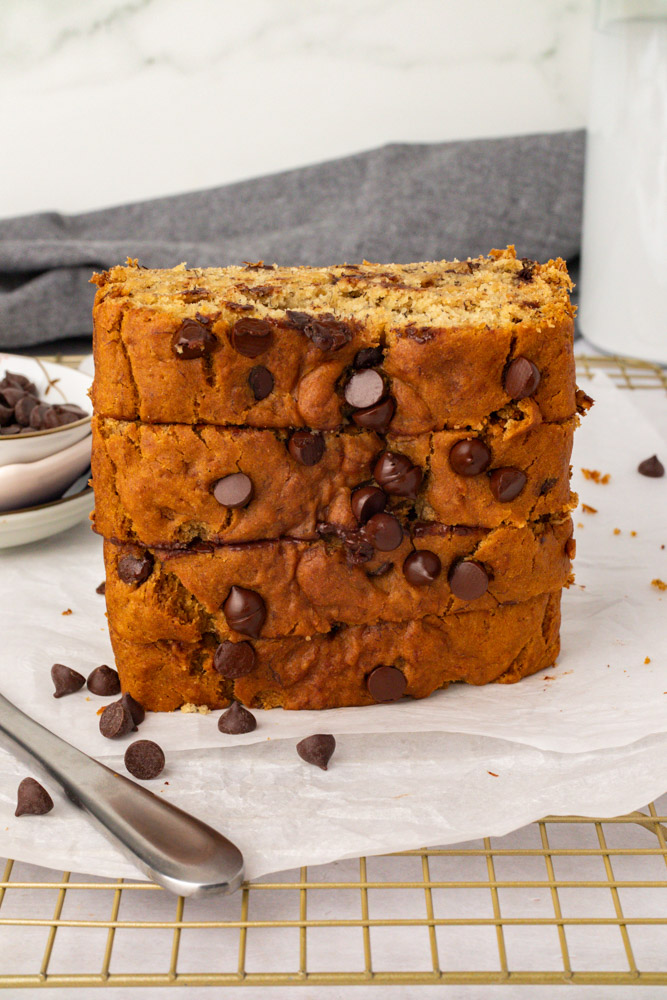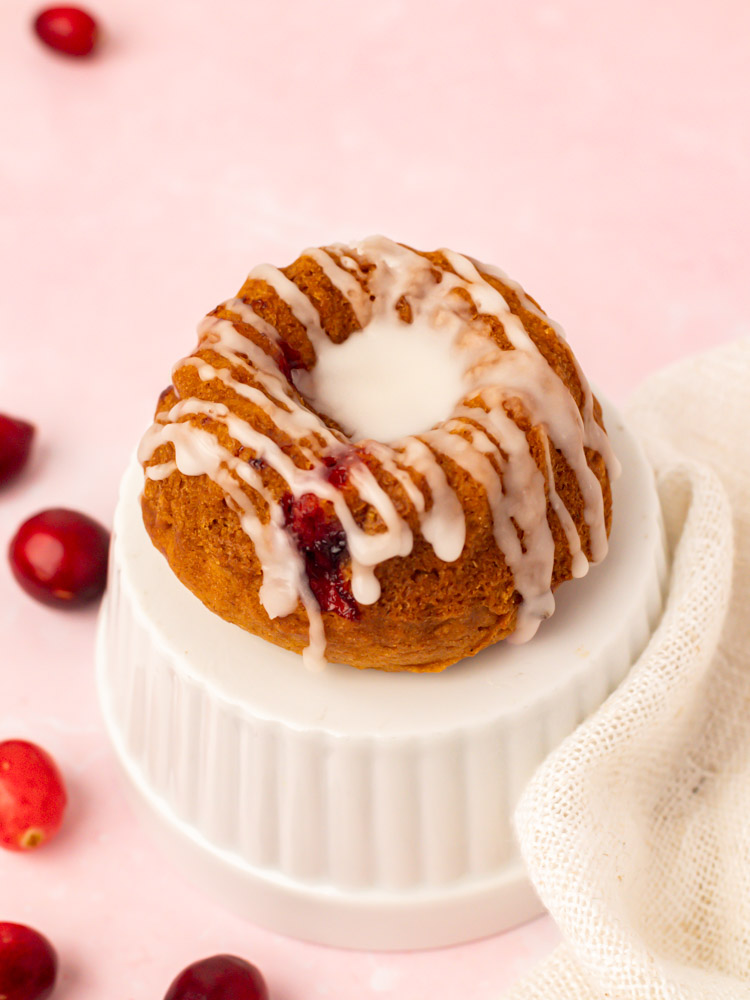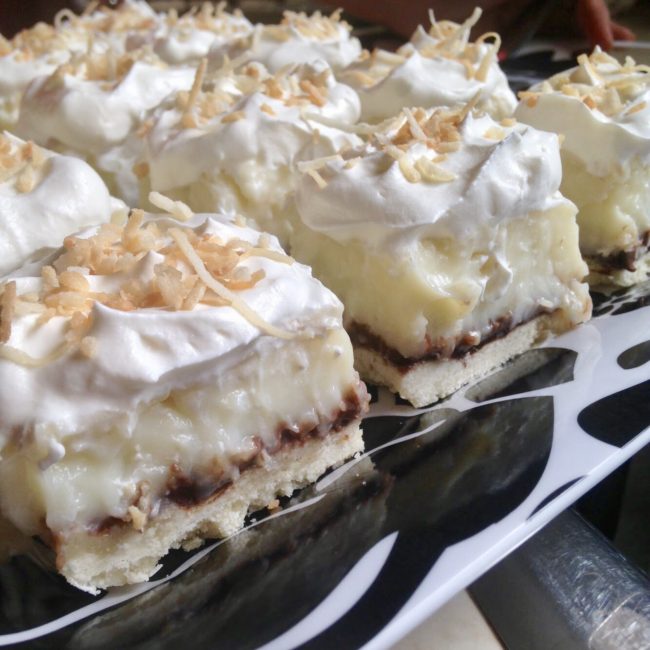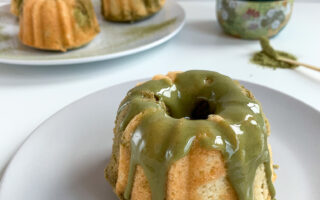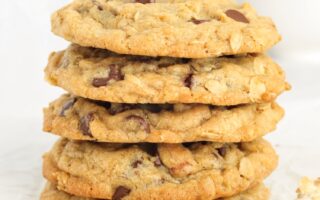Affiliate Disclosure: This blog may contain affiliate links. This means that if you click on a link and make a purchase, we may earn a commission. However, please note that we only recommend products and tools that we use and genuinely like. We always prioritize our readers' best interests. By clicking on these links, you won't incur any additional costs, but it will help us keep this site running. Thank you for your support!
Traducir a Español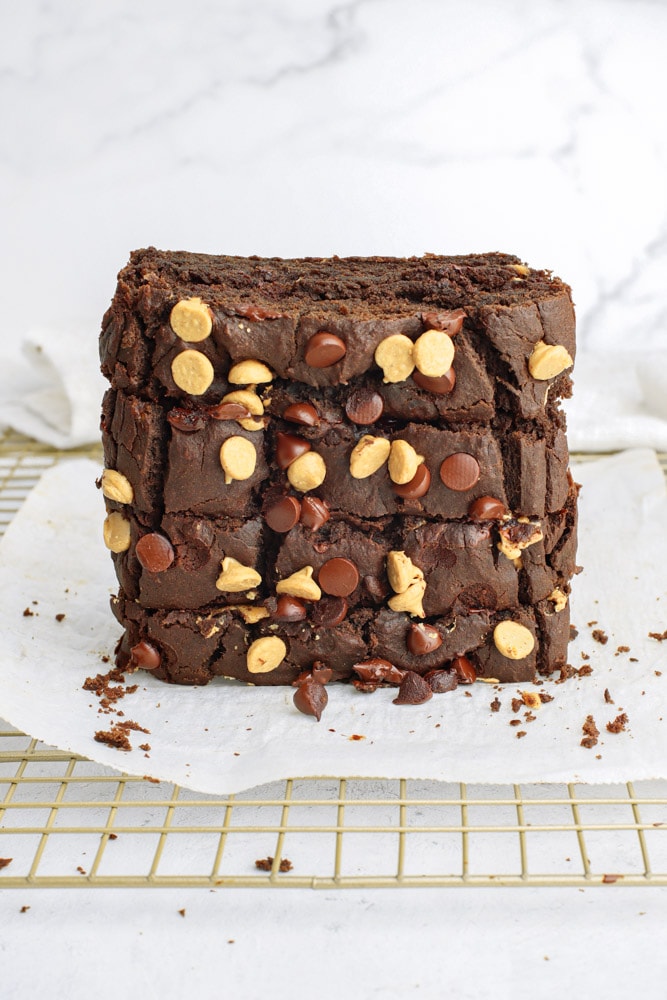
RECIPES – SEP 24, 2024
gluten free vs. gluten friendly: why it matters?
If you’ve ever wondered the difference between gluten free and gluten friendly baking, you’re not alone! Let’s break it down so you can make the best choices when treating yourself to delicious desserts.
When it comes to gluten free and gluten friendly baking, the differences go beyond just the ingredients. If you’re sensitive to gluten or have celiac disease, or other autoimmune diseases, understanding these distinctions is important for your health. Let’s dive deeper into what sets these two apart and what bakeries must do to ensure their products are truly gluten free.
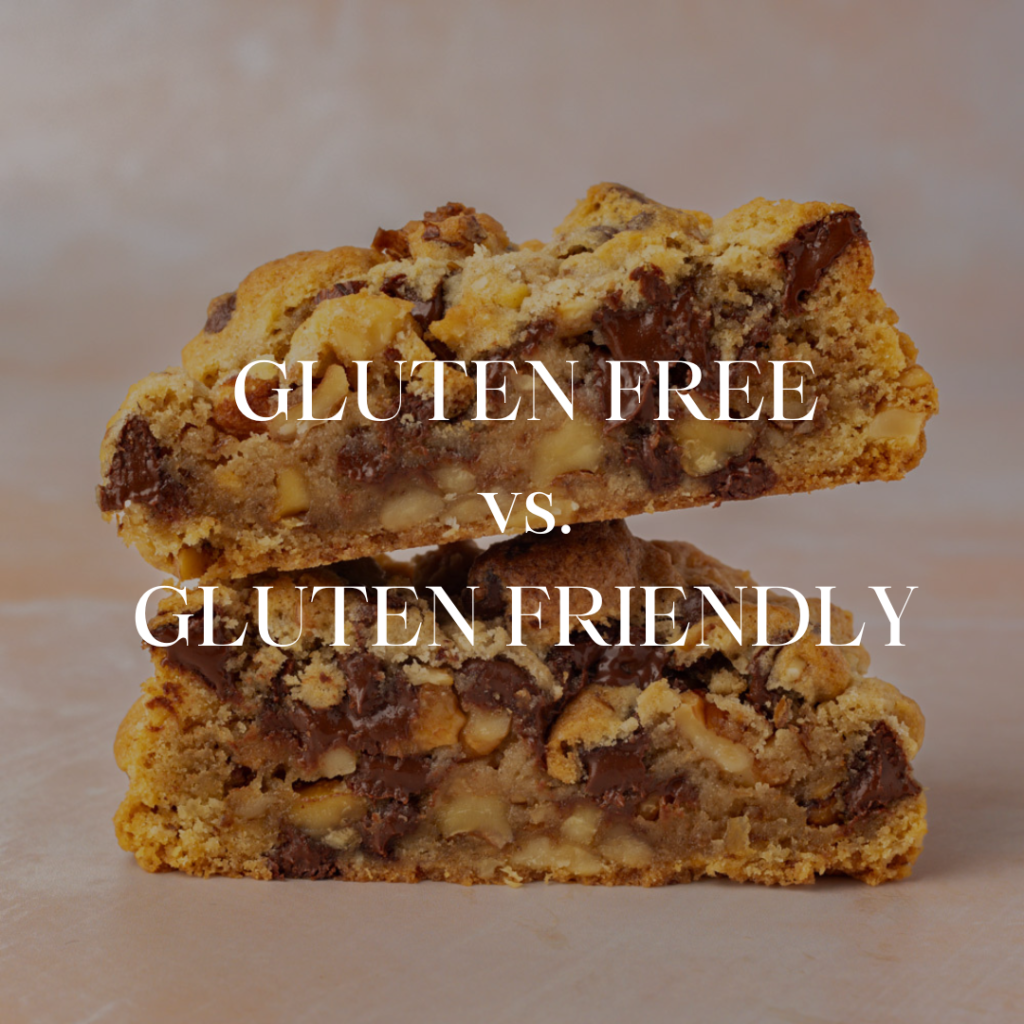
Gluten Free and Gluten Friendly Definitions
Gluten Free: When a treat is labeled gluten-free, it means it’s made without any gluten-containing ingredients like wheat, rye, or barley. However, creating gluten-free baked goods isn’t as simple as just leaving out gluten ingredients. Bakeries need to follow strict procedures to ensure that products are genuinely safe for people with celiac disease or gluten intolerance. Due to cross-contamination and shared equipment, your gluten free items may indeed contain traces of gluten.
Gluten Friendly: While gluten friendly items don’t contain gluten in the recipe, they are prepared in a shared kitchen that also handles gluten. This means there’s always a risk of cross-contamination. For individuals who are simply trying to reduce gluten in their diet, gluten-friendly might work just fine. However, for those with celiac disease or a high sensitivity to gluten, even tiny traces can trigger a reaction.
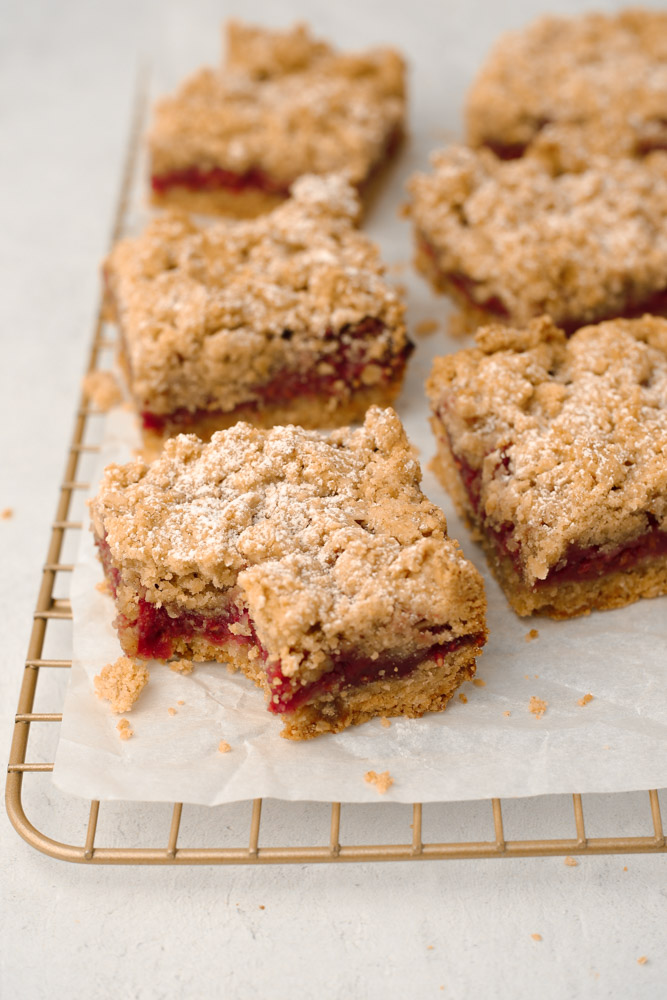
Gluten-free Raspberry Bars Recipe: This small batch recipe for Gluten Free Raspberry Crumb Bars has a delicious crust, a sweet and tangy raspberry filling, and a buttery topping.
Top Sources of Cross-Contamination in Gluten Free and Gluten friendly Baking:
Cross-contamination can occur in several ways. Here are the main sources of gluten cross-contamination to be mindful of in your kitchen:
- Shared Tools & Utensils: Gluten can hide in the cracks of mixing bowls, spoons, spatulas, and wooden utensils, making thorough cleaning essential. Measuring tools can also transfer gluten if not cleaned between uses.
- Appliances: Crumbs and flour can stick inside toasters, ovens, and mixers, contaminating gluten-free items even after cleaning.
- Flour in the Air: Gluten-containing flour can stay airborne for hours, settling on surfaces and utensils, risking contamination.
- Cutting Boards & Surfaces: Gluten sticks to countertops, cutting boards, and rolling pins, requiring thorough cleaning to avoid cross-contact.
- Shared Storage: Gluten-free ingredients can become contaminated in shared containers or when stored near gluten-containing items.
- Hands: Handling gluten-containing ingredients without washing hands can transfer gluten to gluten-free items.
- Serving: Using the same trays or utensils for gluten-free and gluten-containing items can cause cross-contamination. Use separate ones for gluten-free options.
By paying close attention to these areas, you can keep your kitchen safe for gluten free baking, especially if someone in your household requires a special gluten free diet.
Gluten-free Banana Bread Recipe: This banana bread is free from gluten, dairy, and eggs. It will make you smile as you try this vegan version, bringing together the perfect flavor and texture that won’t make you miss traditional banana bread.
About the recipes in this blog
When a recipe on this blog is labeled gluten-free, it means it’s suitable for people who require strict gluten-free diets and is made with ingredients that do not contain gluten. However, it’s important to remember that it depends on your home environment. If your kitchen also handles gluten-containing ingredients and you don’t take precautions—like using dedicated pans, cutting boards, or workspaces—then your baked goods may not be completely gluten-free, but gluten friendly.
For example, in my home, I prepare a variety of recipes with both gluten-free and gluten-containing ingredients. This means there is always a risk of cross-contamination from shared tools and spaces. As a result, the treats I bake at home are considered gluten-friendly rather than strictly gluten-free. Since no one in my household has celiac disease or a severe gluten or wheat allergy, it’s safe for us to consume trace amounts of gluten.
If you or someone in your family needs to avoid even the smallest amounts of gluten, it’s very important to follow strict precautions in your kitchen to keep your gluten-free recipes truly safe.
Check out all my gluten-free recipes here.
Gluten-free Pumpkin Cranberry Muffins Recipe: These little pumpkin cranberry muffins bring together the cozy essence of pumpkin, the tangy burst of cranberries, and the warmth of seasonal spices, all while being kind to your dairy and gluten-free preferences.
Here’s what needs to be done to ensure treats are truly free of gluten:
This applies to your home-baked items but also items you may purchase at a bakery. Many bakeries still don’t have the knowledge to differentiate gluten-free from gluten-friendly items. This results in labeling everything Gluten-free or “GF”.
I suggest you ask the team at the store about the preparation of items and if they can ensure there is no cross-contamination from a gluten processing area or equipment.
- Dedicated Equipment and Space: To ensure treats are truly gluten-free, bakeries and home bakers should use separate mixers, bowls, trays, and ovens that are never exposed to gluten. Even small traces left on shared equipment can result in contamination.
- Thorough Cleaning: In mixed-use kitchens, it’s essential to clean all surfaces and tools thoroughly between batches. However, even with meticulous cleaning, cross-contact can still occur, especially with airborne flour.
- Flour in the Air: To minimize the risk of gluten contamination from airborne flour, you at home or bakeries should schedule gluten-free baking at separate times from gluten-containing items, ideally using a designated workspace that can be closed off. Installing HEPA air purifiers, and thoroughly cleaning surfaces can also reduce the chances of cross-contamination.
- Ingredient Handling: Gluten-free ingredients can be exposed to gluten during storage or transport. To prevent contamination, it’s important to store them in sealed, dedicated containers.
My favorite Gluten-free ingredients for baking:
- King Arthur Measure for Measure Gluten-Free Flour
- One Degree Gluten Free Sprouted Rolled Oats
- Enjoy Life Baking Dark Chocolate Morsels
- Nestle Toll House Semi Sweet Chocolate Chips for Baking and Snacking
- Argo 100% Pure Corn Starch
- Rigoni di Asiago Organic Dairy Free Nocciolata Classic Hazelnut Spread
- OREO Gluten Free
